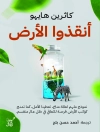Much of our food comes from seeds. But where do our seeds come from? And where are they going? For much of human history, farmers saved their own seed stocks to ensure a good harvest from year to year. In the mid-twentieth century, governments became involved in seed saving, creating massive seed libraries cataloguing thousands of varieties. This biodiversity has come under attack in recent decades, as corporations have replaced heirloom varieties with genetic engineering and costly trademarks. In such an agricultural climate, saving seeds becomes both a practical act of preservation and powerful act of protest.
Over half of Canadian households grow fruits, herbs, vegetables or flowers for personal use, according to Statistics Canada. And each of these home gardens has the potential to preserve vital biodiversity, if only we would let plants go to seed, harvest and preserve them. Saving Seeds is a clear and winsome introduction to the essentials of seed saving, from seed selection criteria to harvest and storage tips. It also addresses the role of seed-saving communities: local swaps, seed companies, friends and neighbours and even how the Internet can support this time-honoured practice.
In an era of community gardens, farmers markets and renewed interest in heirloom species, Saving Seeds is a timely call to ensure a more secure future for our seeds and ourselves.
Об авторе
Dan Jason lives on Salt Spring Island, BC, where he founded the mail-order seed company Salt Spring Seeds. He has written many popular books about growing and preparing food sustainably, including The Power of Pulses (Douglas & Mc Intyre, 2016, with Hilary Malone and Alison Malone Eathorne) and Some Useful Wild Plants (Harbour Publishing, 2017).












